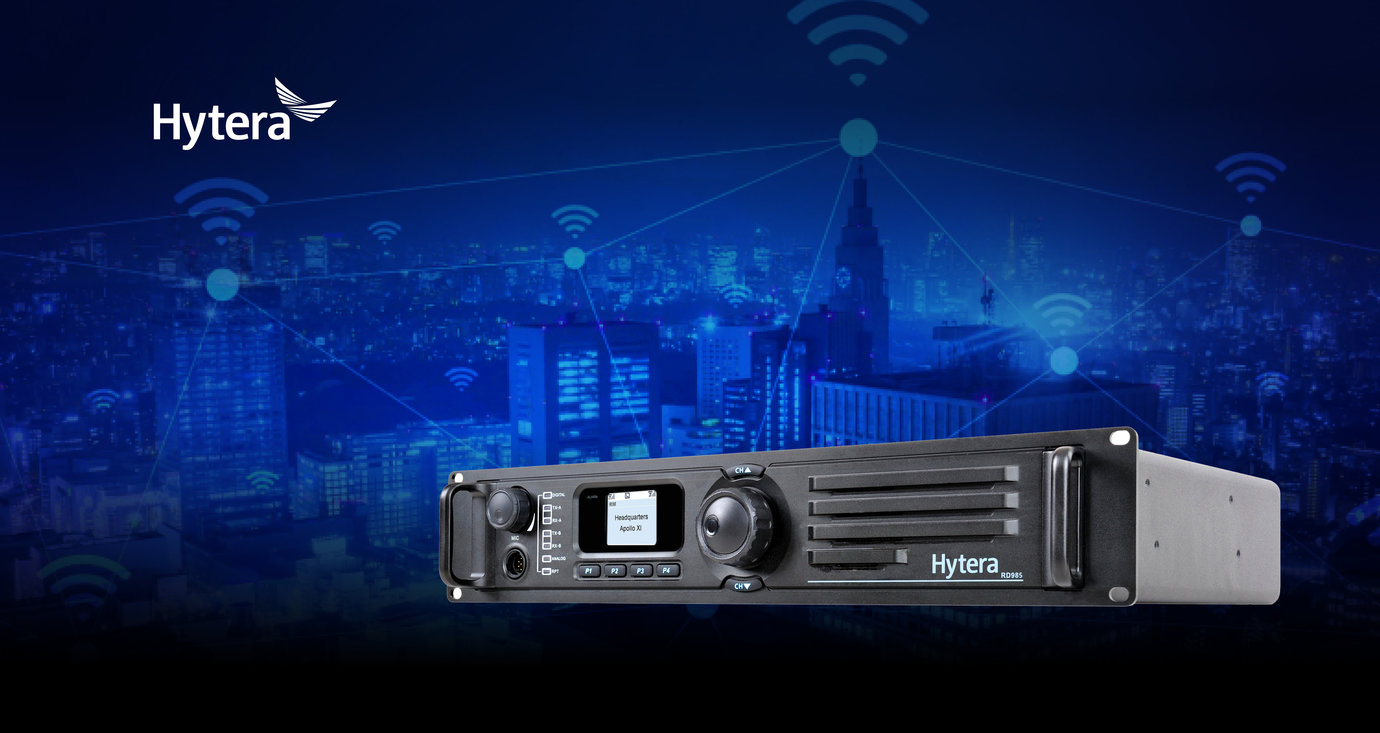Multi-site Connectivity
How to connect different radio sites together and ensure seamless handover, so calls and data sessions are not dropped unlike mobile phone networks.

Many two-way radio users will start off with a Digital Mobile Radio (DMR) Tier II conventional system. The system might just comprise a few hand portable terminals communicating directly or if there are a reasonable number of subscribers communicating over a wider area then one or more repeaters will be needed.
But what if you then want to expand coverage and perhaps capacity further and also add some more applications? Hytera offers a number of options to help you expand your Tier II Conventional system. The first place to start are the Hytera IP Site Connect and IP Multi-site Connect solutions, which link repeaters and enables them to switch data, voice and packets over a TCP/IP-based network. IP Multi-site Connect has a number of benefits. It allows you to connect two or more discrete DMR Tier II conventional communication systems even when separated over a large geographic area. This provides more effective communication over a wider coverage area. You could, for example, deploy a number of repeaters throughout a large building complex or site to overcome dead signal areas and ensure seamless coverage.
You can also broadcast a message to all connected repeaters, such as in an emergency situation when all radio subscribers need to be alerted. You can also use IP Multi-site Connect to connect repeaters working with varied frequency bands, such as VHF and UHF to allow voice and data to be transmitted among them.
Finally, it also allows you to add more functionality to your system as you can now use multiple IP-based software (such as dispatcher) as well as API-based software developed by third parties to add more functions.
Network architecture
In terms of network architecture, IP Multi-site Connect supports four basic schemes. In a heavy overlapping coverage scenario the repeaters operate on different frequencies in the overlapping areas to avoid interference. In the non-overlapping areas, the same frequency is employed but different colour codes are required for roaming service.
A non-overlapping coverage architecture is often used in rural areas or small urban areas. Here, there are multiple separate sites with no overlapping coverage, so the same frequency is used while different colour codes are again required for roaming service.
A minimal overlapping coverage scheme is often used to provide coverage along linear features such as roads, railways, rivers or shorelines. In this scheme the overlapped areas of the multiple sites share a single frequency, but once again different colour codes are required for roaming service.
Finally, the other typical architectural scheme is one where there is multiple overlapping coverage. This kind of scheme is designed to provide coverage in high-rise buildings or in deep underground features. Here the multiple repeater sites are deployed in fairly close proximity with multiple overlapping coverage. The coverage area of each site is limited due to adverse conditions, so frequency reuse is seldom available and quick signal attenuation occurs frequently.
In terms of network topology, IP Multi-site Connect can operate with many networks or can connect all Wide Area Channels (WACH) via a physical network, depending upon the repeater location and the network connection.
The two main kinds of network are local area networks (LAN) and wide area networks (WAN). In most cases, the LAN and WAN together constitute the network topology. For example, multiple remote sites or the LAN of two sites can be connected via an ISP. The IP Multi-site Connect network supports 15 repeaters.
The big advantage of IP Multi-site Connect is that it can connect dispersed sites quickly through the Internet provided by an ISP (Internet Service Provider). A range of technologies can be used to connect up the sites including: dedicated T1; DSL (typically ADSL); cable modem; broadband wireless access such as Canopy; ISDN; and frame relay.
If a larger system is required, then Hytera provides two further solutions based on DMR Tier II Conventional Systems: Hytera Simulcast; and Hytera XPT (Extended Pseudo Trunking) which might be referred to as DMR Tier “2.5”, as it provides a bridge between Tier II conventional and a full Tier III trunking system.
It is worth stressing that the advantage of both Hytera IP Multi-site Connect and Hytera XPT is that neither requires an independent network controller (switch) or server, unlike Hytera Simulcast and DMR Tier III systems which do require one. The Simulcast system also has no limit on the number of repeaters.
DMR Tier II conventional systems are generally considered to be suitable for up to 80-100 users making it the ideal choice for small to medium-sized organisations primarily looking to support voice services. If more subscribers need to be support or more feature-rich applications are required then you should consider moving up to a Hytera DMR Tier III trunking system.
For more information on Hytera’s DMR multi-site solutions contact Hytera Authorised Dealer.
24 October 2018

